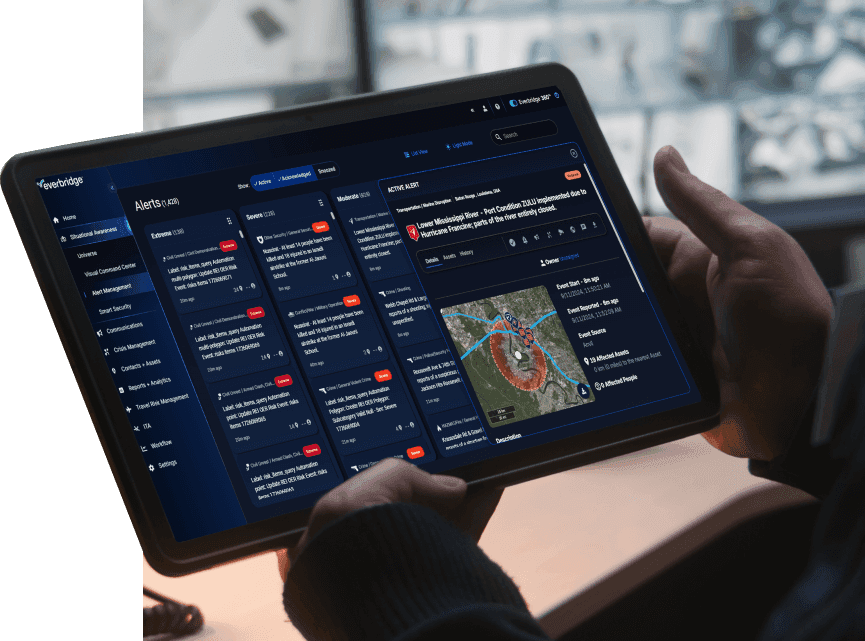Best Practices for Critical Communications…On Campus: The Argus Leader in South Dakota recently ran a detailed profile on several local colleges that leverage Everbridge and other services to effectively notify and alert students and staff to emergencies and other types of incidents. The article explains how universities have different best practices and techniques, and generally tailor their communications to the severity of the incident and the imminence of the situation. South Dakota State University, for instance, used Everbridge recently to update the campus after a “man being sought in a robbery crashed his vehicle near the campus.” They made the decision because there was no imminent harm, so alerts were delayed. Other universities, however, have different strategies, and the article raises some great discussion points, including the importance of managing the volume of notifications to avoid desensitizing students and staff to notifications.
The Social Media Frontlines: In our recent webinar, Dr. Bob Chandler explained how important social media can be when communicating during disasters. When critical events occur, there is no longer a lag in communications, and organizations need to understand how to effectively monitor these channels. Just take a look at the recent Jet Blue emergency landing in Long Beach. Passengers provided dramatic, live Tweets and other communications in the heat of the moment. Looking back, the Tweets are exhilarating to read—and they also reflect how quickly information can be disseminated in the midst of an emergency.
Team Rubicon – Chainsaws AND Computers: We are always proud to introduce Team Rubicon as one of our strategic partners. The organization does a phenomenal job “bridging the gap between military and civilian life” and mobilizing experienced field operators as aid workers during emergencies. And, while they are typically more comfortable with “chainsaws over computers,” it’s clear that technology is a key to their effectiveness. This piece does an excellent job describing how different “technology systems grant our organization unprecedented and instantaneous access to actionable information.” Team Rubicon leverages Everbridge to alert their members, confirm their availability and mobilize response efforts with precision.
Test, Confirm, Analyze: If there is one best practice we regularly espouse here at Everbridge, it’s the importance of engaging users and stakeholders before an event occurs by performing regular tests. One of our customers, Monterey County’s Office of Emergency in California, is doing just that—not only testing our Unified Critical Communication platform, but also encouraging citizens to confirm receipt. This helps the county analyze the effectiveness of the notification, how it was received (e.g. phone or email) and more.
Now, we’d love to hear your take. What other stories and best practices have been catching your attention?
We hope you join the conversation and offer your comments and perspectives—helping Everbridge and our customer community develop the most effective strategies for communications and collaboration during critical events.
